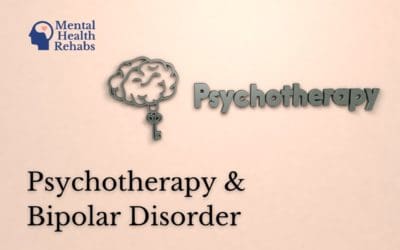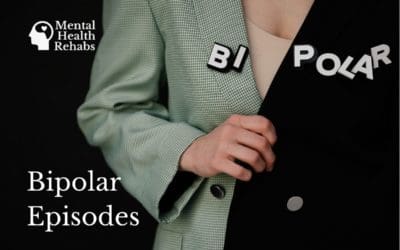Bipolar II Disorder.

What is Bipolar 2 Disorder?
Bipolar II disorder is characterized by pronounced depressive episodes and shorter, less severe hypomanic episodes. Due to the absence of full-blown manic episodes in Bipolar II, it’s sometimes misdiagnosed as a personality disorder or chronic depression. While bipolar can occur at any age, the first symptoms typically appear in the teenage years or early 20s.
Symptoms
The primary symptoms of bipolar II disorder are depressive episodes, though hypomanic episodes can also occur. While people with bipolar I disorder cycle between depression and mania, bipolar II sufferers experience mostly depression and hypomania.
Depressive Episodes
Depression is the primary mood in bipolar II disorder. To be diagnosed, one must experience at least one major depressive episode lasting at least two weeks. Symptoms during this phase include:
- Persistent sadness
- Feelings of guilt or worthlessness
- Loss of interest or pleasure in activities
- Low energy and activity
Hypomania
Hypomania is a milder form of mania. While elevated energy levels characterize both hyper and hypomania, hypomanic episodes are less severe and don’t necessitate hospitalization or present with psychotic symptoms like hallucinations. Symptoms include:
- Excessive energy
- Hyperactivity
- Rapid, constant, and loud speech
- Lack of judgment
- Impulsivity
Mood Episodes
The DSM-5 acknowledges cyclothymic disorder as a less severe variant of bipolar disorder. Its symptoms mirror those of bipolar II. Cyclothymia is a mood disorder that involves quick shifts from one mood episode to another. Individuals go from hypomania to depression, with brief periods of normalcy (euthymia).
Causes
The exact causes of bipolar II disorder remain elusive. However, a blend of factors is believed to contribute to its onset:
- Family History: Bipolar disorder has a strong genetic component. Those with a parent or sibling with bipolar disorder are at higher risk of developing one.
- Brain Structure and Functioning: Although it is still under research, the brain structure of people with bipolar disorder may differ from those of people who do not have it. Mood shifts in bipolar disorder are believed to be linked to imbalances in neurotransmitters like norepinephrine and serotonin.
- Excessive Alcohol or Drug Use: While not a direct cause, substance misuse can precipitate bipolar symptoms.
- Lifestyle Factors: Situations causing hormonal imbalances, such as sleep deprivation and stress, can trigger episodes, especially in those genetically predisposed.
Diagnosis
Bipolar disorders are diagnosed by qualified mental health professionals based on symptom severity, duration, and frequency.
DSM-5 Criteria
The DSM-5 categorizes bipolar disorder under “Bipolar and Related Disorders.” Bipolar II specifically involves:
- Major depressive episodes lasting at least two weeks
- Hypomanic episodes that are less intense than manic episodes
The DSM-5 also recognizes cyclothymic disorder as a milder form of bipolar disorder. It is diagnosed when a person experiences numerous periods of hypomanic symptoms and depressive symptoms over at least two years. However, the symptoms do not meet the criteria for a full major depressive episode, hypomanic episode, or manic episode.
ICD-11 Criteria
The 11th International Classification of Diseases (ICD-11) differentiates from the DSM-5. The ICD-11 offers a slightly varied classification approach but retains similar criteria. It differentiates between bipolar I and II, with the latter involving at least one hypomanic and one depressive episode.
Bipolar II Management and Treatment
While there’s no cure for bipolar disorder, effective management allows for a fulfilling life.
Medication
Medications are tailored to individual symptoms and may evolve over time. Commonly prescribed drugs include:
Antidepressants
Mood stabilizers
Antipsychotics
Psychotherapy
Along with prescribed medication, psychotherapy is vital in managing bipolar disorder II. Options include:
Cognitive Behavioral Therapy (CBT)
CBT has been shown to be effective in mood stabilization in bipolar I patients. Here, the individual restructures maladaptive thoughts and behaviors and gains better control of emotions. This therapy reduces the recurrence of symptoms compared to prescription medication alone.
Family Therapy
Interpersonal and Social Rhythming Therapy
Alternative Treatments
Alternative treatments might be considered when medications and psychotherapy haven’t been effective or can’t be used. Popular ones include:
Electroconvulsive Therapy (ECT)
Light Therapy
Although it is still under investigation, this therapy has been found to be beneficial in reducing bipolar disorder symptoms. It involves exposure to bright light, usually at home in the morning.
Alternative Medicine
Outlook
With consistent treatment, many individuals with bipolar 2 disorder can manage their symptoms effectively. Medication, therapy, and lifestyle changes can significantly reduce the frequency and severity of episodes.
However, when left untreated, bipolar-related depression can last up to a year. There’s also an increased risk of substance abuse, other health conditions, and suicidal ideation. Despite being milder than type 1, bipolar II is a serious condition necessitating professional care.
What is a person with bipolar II like?
Can you live a normal life with bipolar II?
Is bipolar type II serious?
What is the difference between bipolar 1 and 2?
Related Conditions
- Bipolar Disorder
- Bipolar I
- Cyclothymia
Related Articles
7 Bipolar Triggers & Warning Signs You Should Know
There are a lot of words a person could use to describe bipolar disorder -- and ‘predictable’ isn’t one of them. A disorder characterized by vacillations between episodes of high energy (mania) and depression, it’s impossible to know exactly when these episodes will...
What is the Role of Psychotherapy in the Treatment of Bipolar Disorder?
If you’re familiar with what bipolar disorder is--a mental illness that causes extreme mood swings that cycle between dramatic highs and lows which can result in sudden and extreme changes in behavior, mood, cognitive ability, energy levels, and more--it might be hard...
What Is a Bipolar Episode & How To Predict Them
Bipolar disorder is a mental illness estimated to affect 4.4% of Americans. Unfortunately, this serious mental illness is one shrouded with misconceptions that have resulted in harmful stigmas that have been difficult to shake. One of the best ways to reduce the...
Are You Born with Bipolar Disorder or Does it Develop?
Are you born with bipolar disorder or is it a mental illness that occurs when something happens to you? Science tells us that it’s a little bit of both. Your genes, the cell-building codes inherited from your parents, can lay the neurobiological groundwork that causes...
Don’t Struggle Alone.
Get Help Today.
Reaching out for help for yourself or a loved one can be overwhelming and stressful, but it doesn’t have to be. If you are struggling to find the right help, or even know where to get started, please feel free to call our 24/7 helpline.
Begin your mental health journey right now!




